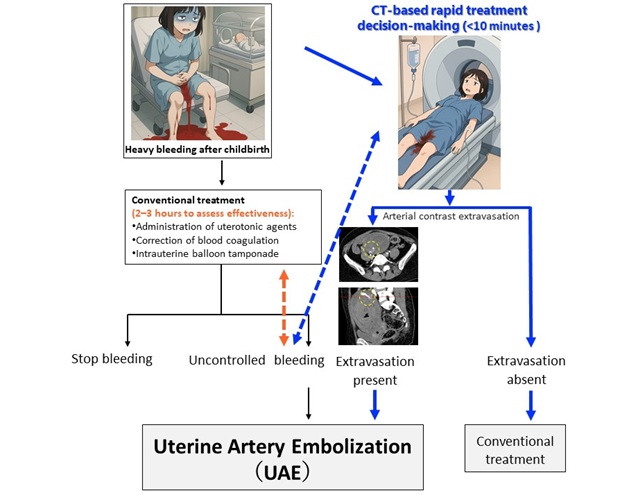New CT-Based Indicator Helps Predict Life-Threatening Postpartum Bleeding Cases
Posted on 29 Aug 2025
Postpartum hemorrhage (PPH) is a leading cause of maternal death worldwide. While most cases can be controlled with medications and basic interventions, some become life-threatening and require invasive treatments. Until now, there has been no reliable method to identify in advance which patients would not respond to standard therapies. A new CT-based indicator has been found to predict these high-risk cases with remarkable accuracy.
Researchers at Kumamoto University (Kumamoto, Japan) have identified a distinctive imaging marker called PRACE, short for Postpartum hemorrhage, Resistance to treatment, and Arterial Contrast Extravasation. The finding was observed during dynamic CT scans of women with severe postpartum bleeding. PRACE is characterized by a contrast agent leaking into the uterine cavity during the early phase of imaging, indicating active arterial bleeding that may not respond to conventional therapies.

In a nationwide study across 43 advanced medical centers in Japan, investigators analyzed 352 severe PPH cases, of which 205 underwent dynamic CT scans. Among these, 58 patients (32.2%) showed the PRACE pattern. The study revealed that PRACE-positive patients had more than triple the likelihood of requiring uterine artery embolization (UAE) compared to those without the marker.
The presence of PRACE was the strongest predictor for emergency intervention, with an odds ratio of 27.74. Patients showing this indicator were also more likely to experience blood clotting abnormalities and need large-volume transfusions. The findings, published in JAMA Network Open, demonstrate that dynamic CT can provide early, actionable insights into which patients will require urgent life-saving treatment.
Researchers suggest integrating dynamic CT into emergency obstetric protocols to improve maternal outcomes. They also propose updating the traditional “4 Ts” classification system for postpartum hemorrhage—Tone, Trauma, Tissue, Thrombin—to include a fifth category: CT findings. This addition would help stratify patient risk and guide faster interventions.
“PRACE is a game-changer in how we assess and respond to critical postpartum bleeding,” said Professor Eiji Kondoh of Kumamoto University’s Faculty of Life Sciences. “By using dynamic CT imaging, we can now detect early signs of treatment-resistant bleeding and act swiftly to save lives.”
Related Links:
Kumamoto University














